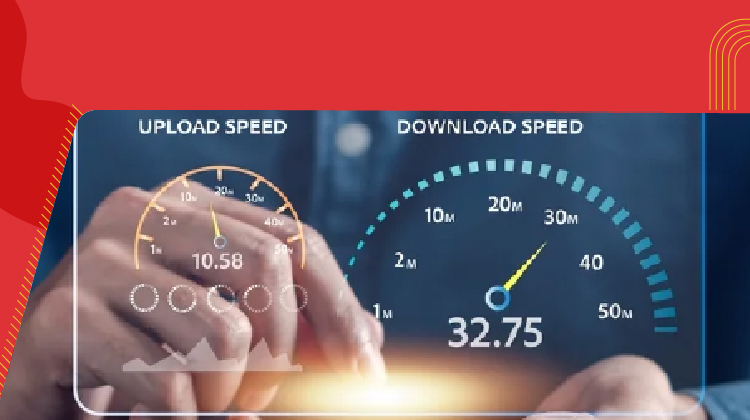What is the difference between fiber broadband and normal broadband
Monday, May 30, 2022 · 9 minutes


FIBER BROADBAND
Monday, May 30, 2022 · 9 minutes
Are you searching for a new broadband connection provider in your area? We understand that this could be a difficult job with so many options and factors to consider while choosing an internet service provider. If you're a high internet user with a heavy streaming load, choosing an unlimited broadband option could work. On the other hand, you could select a moderate package to avoid running up extra costs. Alternatively, for the most common requirements, such as checking emails, paying expenses, etc., go for low-cost, no-frills, packages. Today's internet service providers provide a wide variety of link rights.
If you're ordering broadband for the first time or considering switching providers, our helpful buyers guide below outlines the main factors you need to consider when comparing broadband packages. Choosing an internet service provider is one of the most confusing buying decisions that a lot of people have to make. Making this decision has gotten harder in recent times with the increase in service providers and internet usage.
To kick off however, we thought it would be useful to provide some context information on broadband connectivity and use in India.
Finding and installing an Internet service in your area can be a frustrating process. That's why we've compiled this Internet Service Shopping Guide. Follow the steps below if you need the Internet to be built in your home if you're confused about where to start.
The articles listed here have been designed to clarify the basics so that you can compare your choices and make an informed decision.
When choosing an internet connection for your home or business, you will come across quite a few types of connections - cable internet, DSL connections, Fiber optic internet connections. It is common to get confused between these and have difficulty in choosing the right connection type for you. In this article, we will be outlining the key differences and the factors you need to keep in mind while picking one type over another.
Direct Subscriber Line (DSL):
DSL is an internet connection where data is transmitted over telephone lines. Telephone lines are made of copper, while copper is a great conductor, a DSL connection cannot move data as fast as a cable or fibernet internet connection. One crucial factor that will affect your decision on DSL is the distance between your home and the telephone provider’s office. This means that the farther you are from the main line, the weaker the signal, and the slower the internet connection.
Cable:
Cable internet connections run on telephone lines which use coaxial cables to transmit data, and these can carry more bandwidth than a direct subscriber line connection. When compared to DSL, a cable connection’s connectivity does not depend on the distance. However, unlike a DSL connection, which is a dedicated telephone line, cable connections are usually shared among users. This would mean that the bandwidth gets divided among users, also a lesser secure option. In terms of speed, cable connections are 3 to 4 times faster than DSL and provide speeds to 10-50 Mbps usually.
Fibernet :
Fiber optic cables are the latest technology in the internet service business. These connections make use of fiber optic cables which transmit data at the speed of light. Unlike cable or DSL, the transmission happens over glass and this is immune to all interferences. There are two broad types of fiber connections - direct internet access (DIA) and a fibernet broadband. Direct internet access is an option more commonly used by businesses as it is a dedicated internet line that provides more security and reliability of connectivity. Fibernet broadband is used by individuals at homes. Fibernet speeds range from 150 Mbps to 1000 Mbps.
Internet speeds in the 100–200 Mbps range are considered to be good, as they can handle common uses such as streaming and video chat for 2–5 users at once. Speeds above 200 Mbps and up to 1,000 Mbps are considered to be faster than normal and can be shared by five or more users.
Internet speeds above 100 Mbps are considered to be good for daily use. However, aspects such as upload speed and latency should also be considered for use in cases such as home offices and gaming, where upload efficiency for files and response time for user experience are especially relevant.
The average WiFi speed you encounter across your home will usually be anywhere from 20–50 percent below the announced maximum download speed due to wireless interference and fade as you move further away from the router.
Still wondering how much speed you need? Below are some general download speed based on everyday online activities:
As millions of Indians move to work from their homes, many wonder if their internet access is up to the challenge. Good news is that many of the popular applications that you can use for work may not require a very fast connection, including items like working in Google Docs, sending emails, and even taking part in voice-based meetings.
That said, video chatting or other "high-bandwidth" applications can require faster connections, particularly if multiple people in your home are trying to access them. As a general guideline, we suggest a link that supports at least 50 Mbps of download and 50 Mbps of upload to keep your entire family connected to the internet.
In general, streaming video on websites such as Netflix or YouTube TV needs 5 Mbps to stream to standard resolutions.
If you want to stream to 4k Ultra HD, you'll need a minimum of 25 Mbps. However, even one 4k HD video streaming will use all of your usable bandwidth. For this reason, if you like high-definition video and you have more than one computer connected at a time, we suggest a bandwidth of 50 Mbps or more.
Minimum internet speed requirements for gaming are typically 10 Mbps if no one else in the house uses your bandwidth. Unfortunately, slower internet plans such as these can not offer you the pace of upload you need for consistently good experience.
If you're the only one at home, a 25 Mbps internet plan is recommended for smooth gaming. However, pace is not the only thing that matters in gaming: ping and latency play a role as well. We recommend purchasing a 100 Mbps internet plan for a smooth gaming experience.
The 100 Mbps internet offers 12.5 MB/second transfer rates. Equal upload speeds are provided by a fiber-optic internet connection. A 255 MB operating system will upgrade at this speed in around 21 seconds. Upload speeds for DSL and copper cable lines only run at 5-10 Mbps, taking around 3 minutes to upload a 250 MB file.
An uninterrupted workflow can be provided by a 100 Mbps fiber connection. With that, with a pace that keeps up with your business goals, you will surpass your own standards. Webinars and employee training videos only take seconds to download at this pace.
With users’ evolving needs and internet usage, internet service providers have begun to offer bundled services with streaming, gaming, etc to ensure that their users have a complete internet experience.
When purchasing an ISP, it is always recommended that you opt for bundled services based on your usage. For example, ACT Fibernet offers added services for streaming and gaming to its users.
If you still have queries on purchasing a broadband service, you can refer to our resources on internet speed and connections to know more.
102

The New Social: How High-Speed Internet is Redefining 'Quality Time' with Friends and Family
Read more399

How ACT SmartWi-Fi is Redefining Home Internet in 2025: The Age of AI-Powered Seamless Connectivity
Read more154

From Bandwidth to Intelligence: How AI Is Redefining Business Demands from ISPs
Read more
A referral link has been sent to your friend.
Once your friend completes their installation, you'll receive a notification about a 25% discount on your next bill
![]() Please wait while we redirect you
Please wait while we redirect you

![]() One of our representatives will reach out to you shortly
One of our representatives will reach out to you shortly

One of our representatives will reach out to your shortly
![]() Please wait while we redirect you
Please wait while we redirect you

Please enter your registered phone number to proceed

Please enter correct OTP to proceed


Dear customer you are successfully subscribed
Please wait while we redirect you

Your ACT Shield subscription has been successfully deactivated

Dear user, Your account doesn't have an active subscription

Dear customer Entertainment pack is already activated.
Please wait while we redirect you